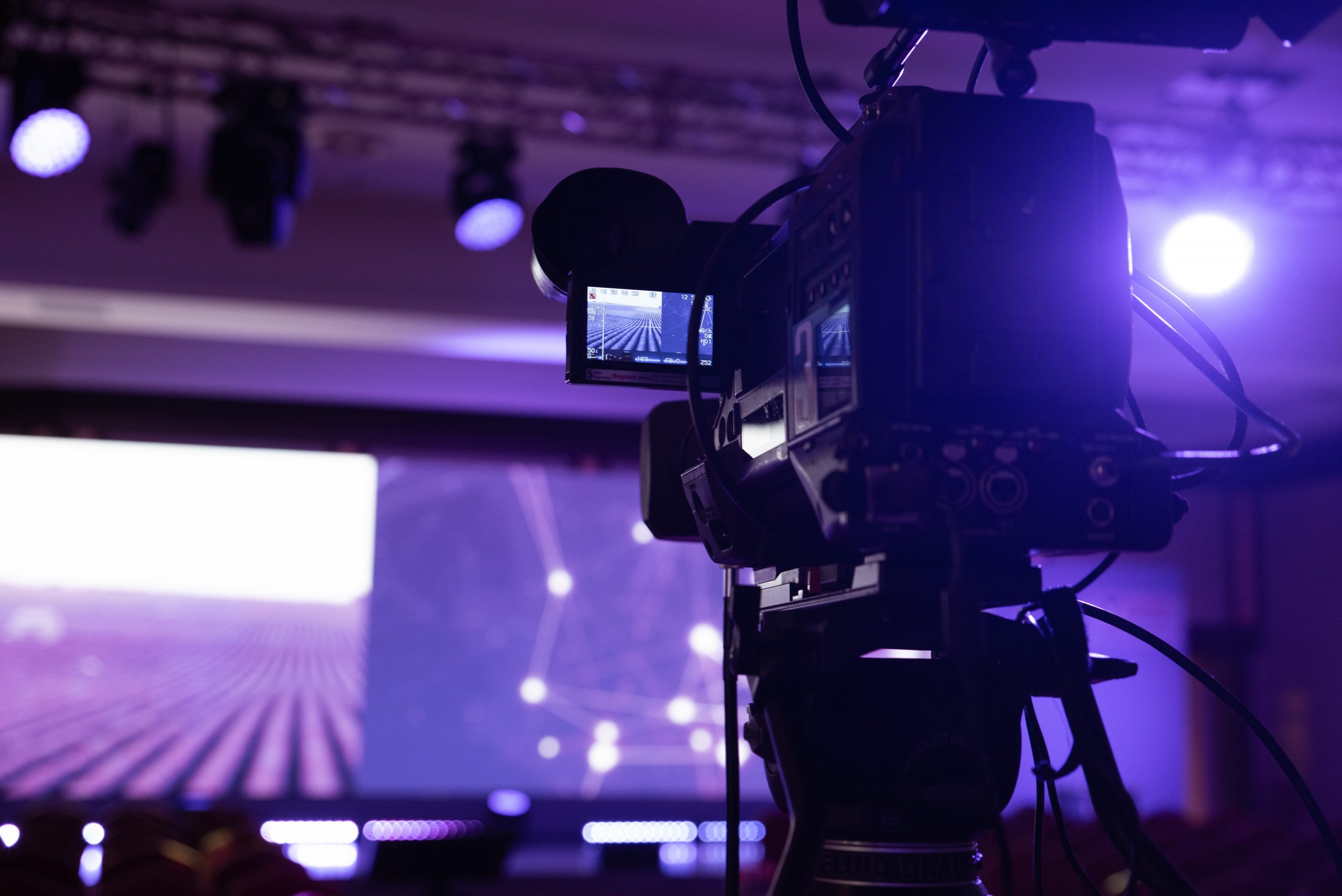
Thanks to the COVID-19 pandemic, we’ve all become amateur audiovisual techs, propping up laptops, buying ring lights, and downloading Zoom to broadcast from our houses.
For small-scale virtual events, it’s fairly easy to create an almost-profesh live stream from an ad hoc at-home studio by following some basic tips and tricks. And for larger-scale events with bigger budgets, it’s now possible in most states to hire production crews to deliver broadcast-quality live streams.
For example, in New York, streaming productions are currently allowed, with no more than 10 people on set (all adhering to social distancing measures of course) and specific equipment restrictions such as up to two cameras. But this type of setup would also require event speakers, presenters, and performers to gather in one location, which might not be feasible or safe.
So whether you’re going lo-fi with a Zoom webinar or aiming for a highly polished presentation, here are some general guidelines to keep in mind when live streaming events.
“The shift from in-person events to digital means holding someone's attention just became a lot harder,” says Andrew Owen, head of community for online event platform Run The World. “A bored attendee is one click away from exiting out, one swipe away from checking Instagram, or a few steps from walking into the kitchen looking for something better to do.” He recommends encouraging speakers to respond to attendees’ comments in the chat. “Getting the group dialogue going is really important to making it feel lively.”
Perhaps the biggest gripe we’ve heard from all the event pros we’ve spoken to about virtual events is lost connections—speakers going M.I.A. minutes before a live stream because of a poor Wifi signal. Owen says that “if you're going to be broadcasting from home with some regularity, it's worth investing in better internet. You can have the most compelling presentation in the world, but no one wants to sit through constant interruptions, laggy audio, and pixelated video.”
To check your connection, Owen suggests doing a quick diagnostic report of your upload and download speeds (just Google “internet speed test”). “If it's slow, make sure your Wifi router isn't on the other side of the house or tucked away behind the bookcase,” he says. As a failsafe, connect to your modem via Ethernet instead of Wifi to avoid any service interruptions.
Dana Bentz, head of marketing at StreamYard, agrees, saying that internet connection is the most important factor in achieving a great quality stream. Adding that the speed should be at least five Mbps, but that “the quality of the connection is more important than the speed.” In addition to plugging into your router instead of using Wifi, she also recommends quitting all other applications that are running on your device to prevent a slowdown.
Owen recommends buying a standalone mic that connects via USB to your computer. “They can help eliminate echo in a room and bring up the warmer tones in your voice,” he explains. If you have the budget, you can send your event speakers and panelists a lavalier mic, which is available in a range of prices, that easily attaches to clothes to ensure you capture clear, crisp audio.
If using headphones, Bentz suggests selecting the "disable audio processing" feature within the streaming platform. This will remove audio processing effects like echo cancellation, noise suppression, and auto gain control that may interfere with a microphone’s built-in audio processing.
“A general rule of thumb is to avoid sitting with a window, or any major light source, directly behind you,” Owen says. That’s because the camera lens will expose for the brightest part of the room, which means your face will end up in more shadow. Instead, he says to turn around and sit facing the window or light source. But avoid too much direct sunlight by buffering it with curtains or shades. If a window isn’t an option, Bentz suggests using a lamp to brighten your appearance.
“A lot of people think they have to have the perfect setup, when actually it's OK to be real about your remote workspace,” Owen says. “We're all at home too. We get it!” He adds that you don’t have to have “the most HD webcam or a professional mic or a fully loaded bookshelf behind you. You don't even have to tell your family to stay out of sight for an hour. Find ways to feel comfortable in front of the camera but don't overstress it. Of course if you're broadcasting in your bedroom, making up the bed is a nice touch.”
This might seem obvious, but always fire up your desktop, laptop, or phone and the necessary software programs in enough time before the event to make sure everything’s working properly. “A lot of technical difficulties can be avoided or fixed before an audience shows up,” Owen says. “Don't wait until 30 seconds before going live to discover that your router needs a good old-fashioned restart or that your airpods are out of juice. Ideally, we recommend speakers test their mic and camera 72 hours before going live if they don't frequently livestream.” At a minimum, speakers should test their devices 30 minutes before showtime to avoid a last-minute scramble, he adds.
With Run The World, organizers are able to host pre-event sessions like tech checks and dress rehearsals so speakers feel prepared and confident, Owen explains. “This also has the added benefit of walking a speaker through the platform's unique UI to learn all the tools like interactive polling and group selfies that speakers can utilize to engage attendees.” Just like an IRL run-through, all of the event’s content and programming should be honed using your chosen platform prior to streaming.
As is the case with many aspects of daily life, how we consume and process content including virtual events has been adjusted and is now viewed through a different lens—sometimes literally. Because of this, audiences don’t necessarily expect picture-perfect execution. Just make sure you come through loud and clear.